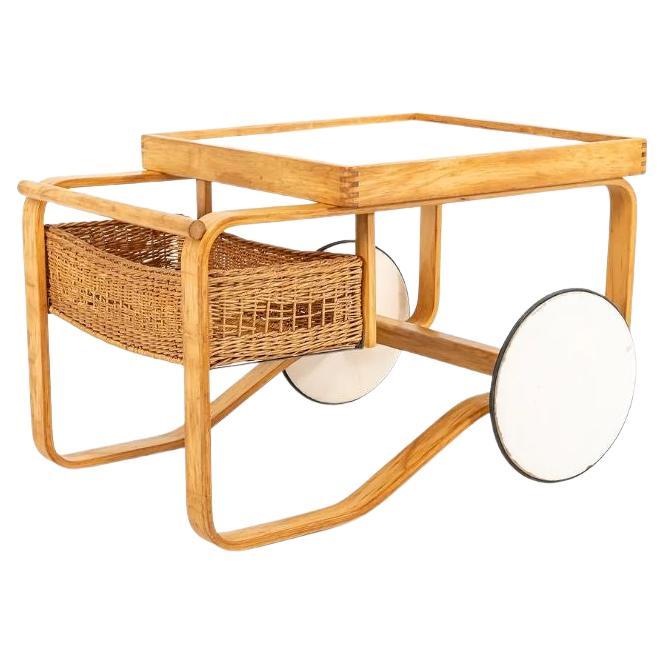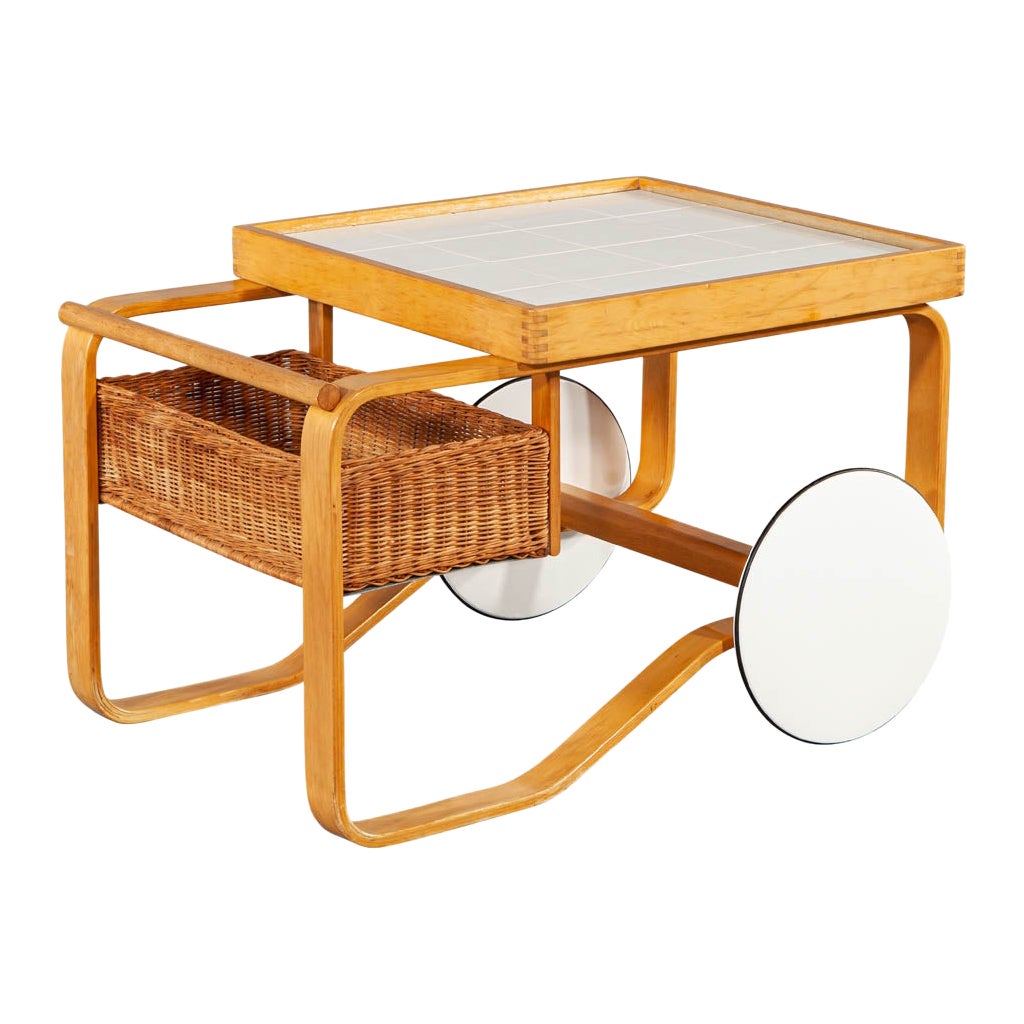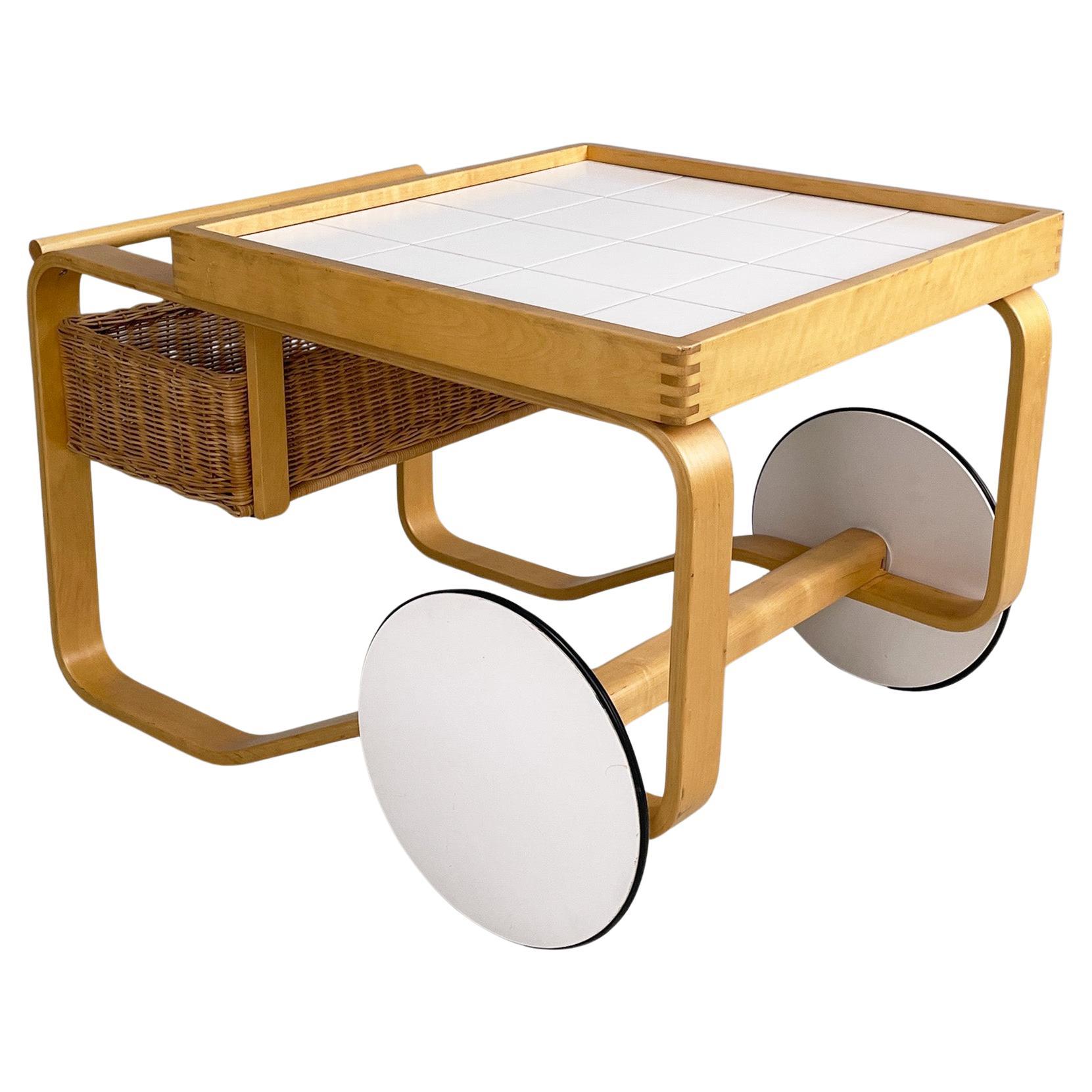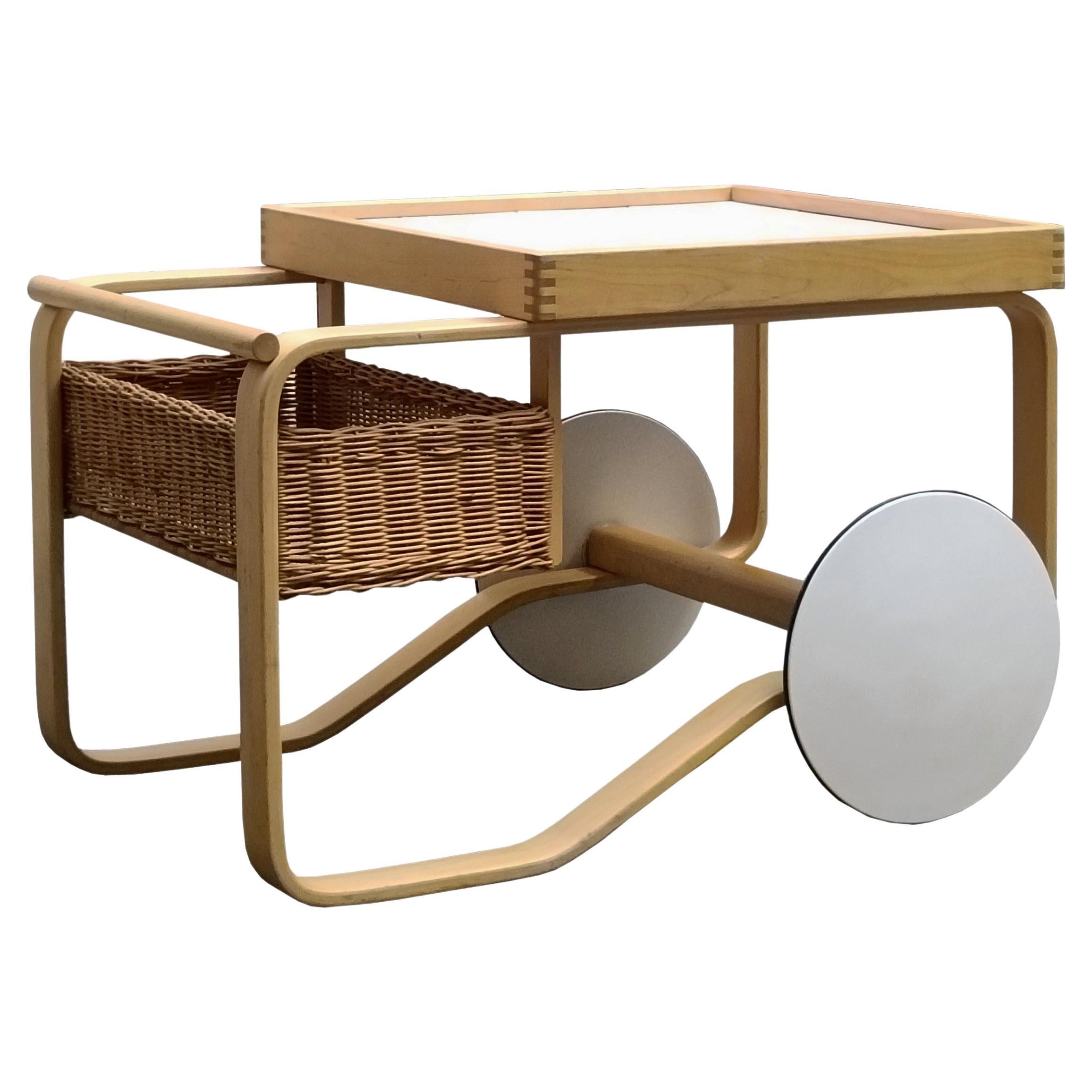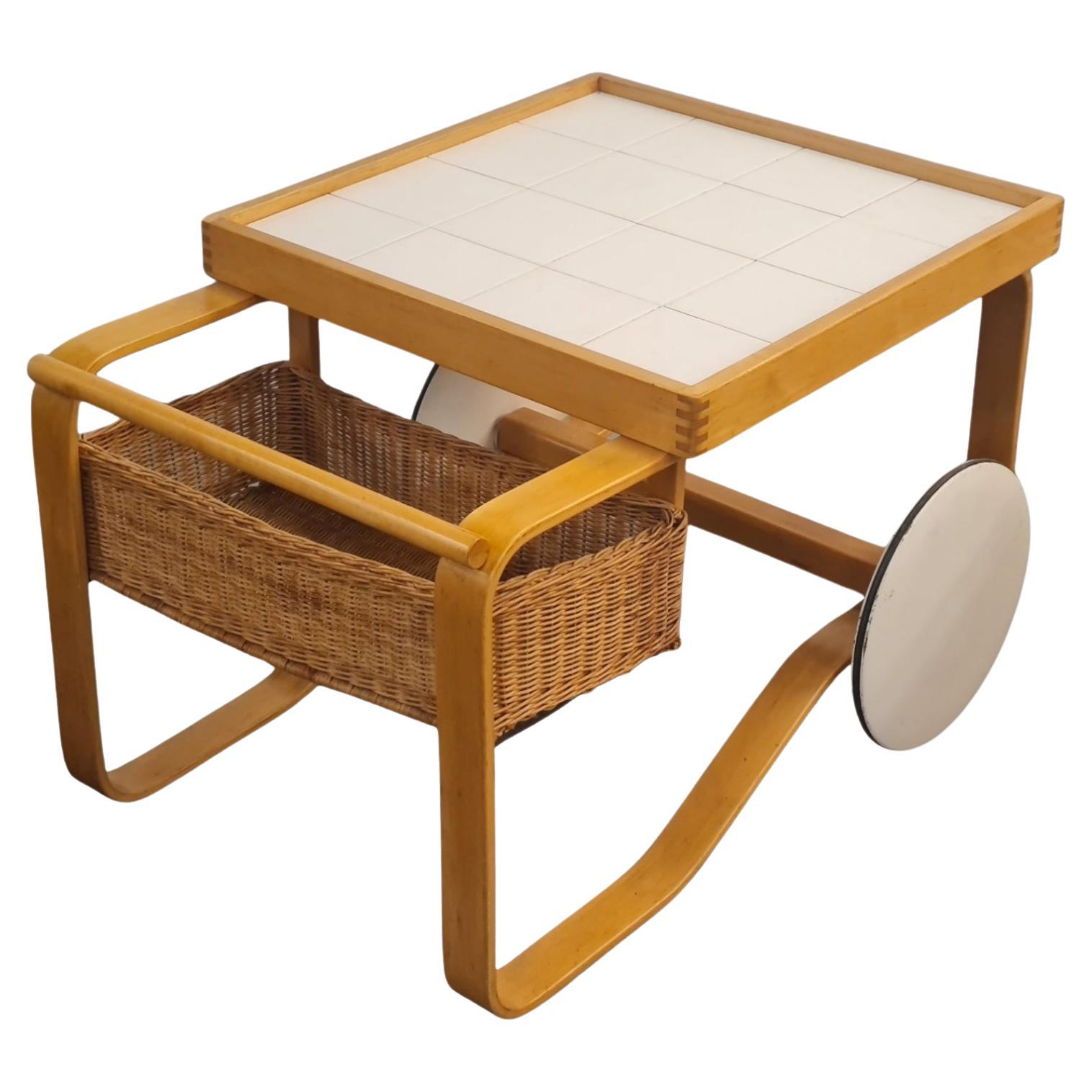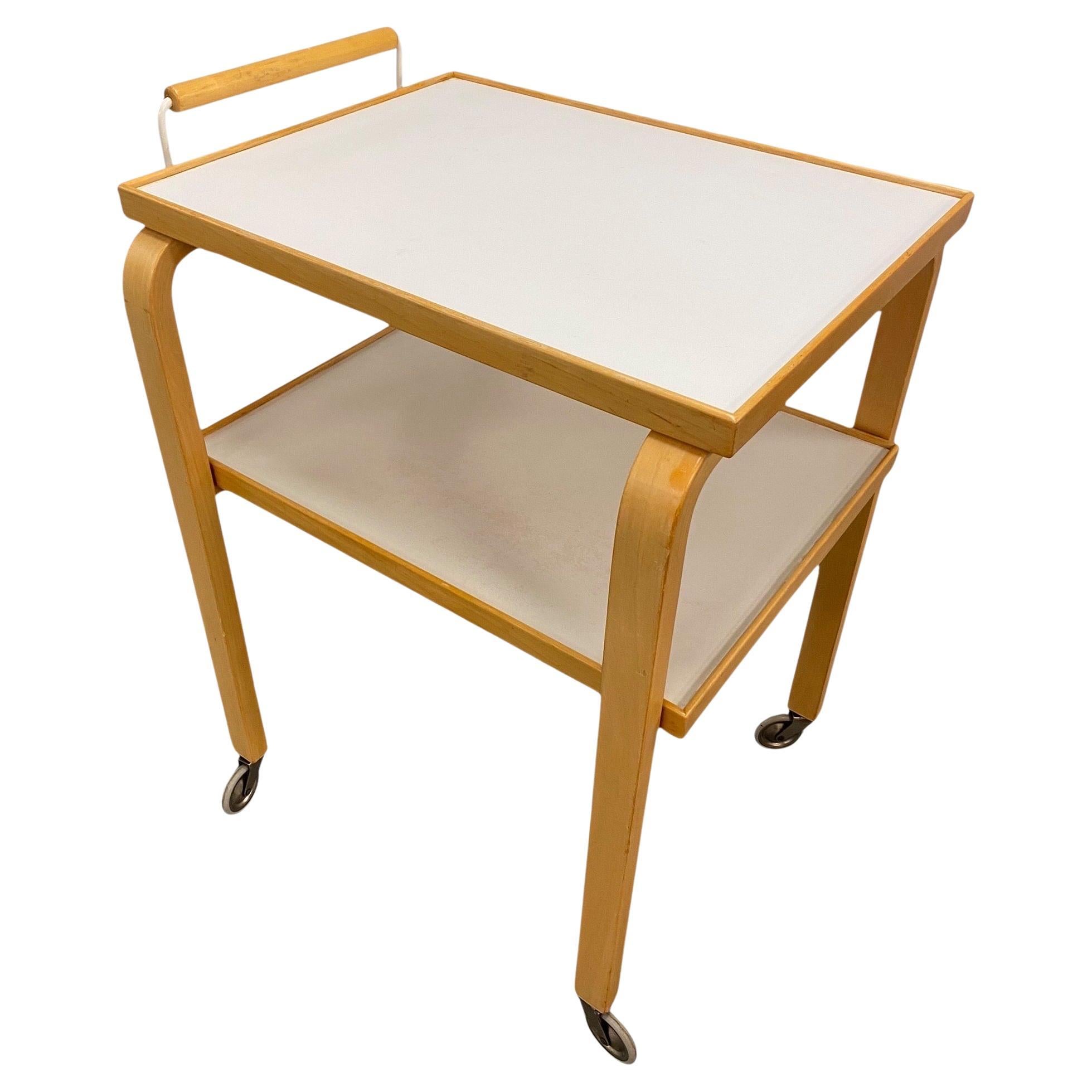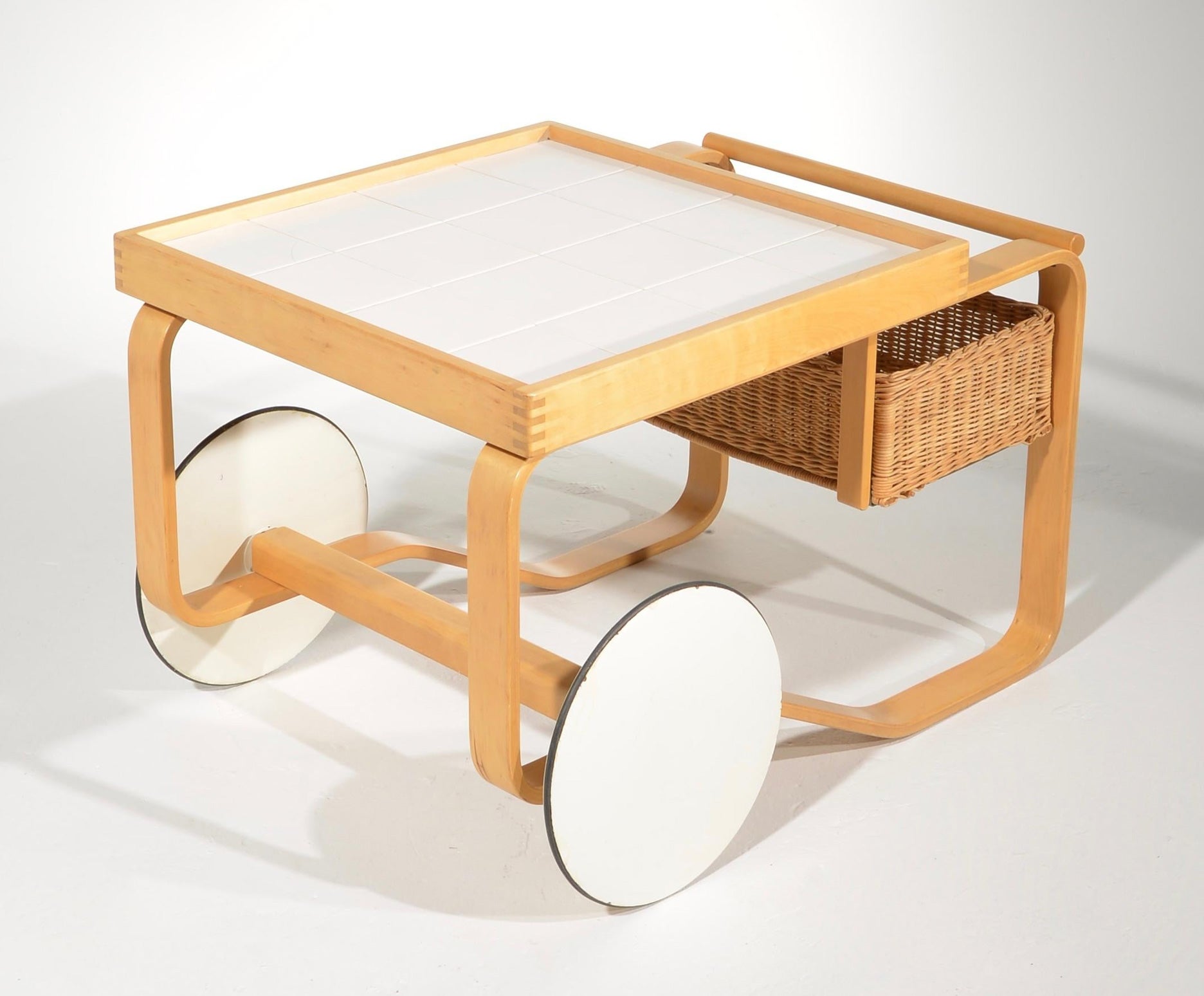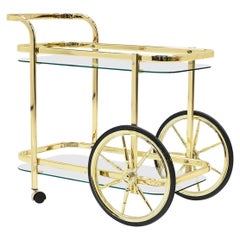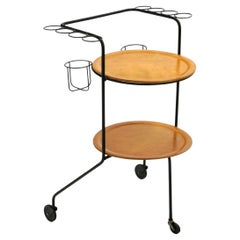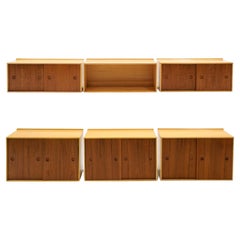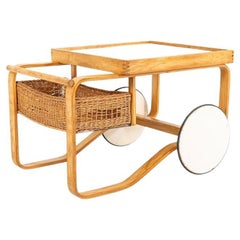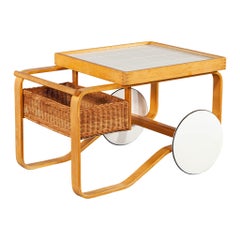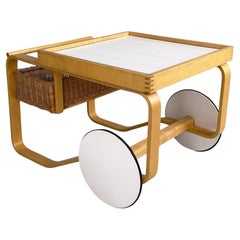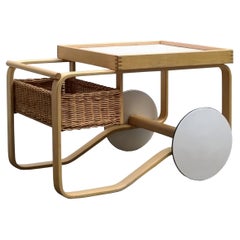Alvar Aalto Tea Trolley / Bar Cart Model 900 for Artek. Birch and Rattan.
About the Item
- Creator:Alvar Aalto (Designer),Artek (Manufacturer)
- Design:
- Dimensions:Height: 23.25 in (59.06 cm)Width: 35.5 in (90.17 cm)Depth: 26 in (66.04 cm)
- Style:Scandinavian Modern (Of the Period)
- Materials and Techniques:
- Place of Origin:
- Period:
- Date of Manufacture:1960s
- Condition:This example is in very good condition with few signs of use.
- Seller Location:Kansas City, MO
- Reference Number:1stDibs: LU1057038229122
Tea Trolley 900
Making its international debut at the 1937 Paris World Exhibition, the Tea Trolley 900 encapsulates Finnish architect and designer Alvar Aalto's (1898–1976) influential approach to modernism through its emphasis on local materials and elegant pragmatism.
A modern take on the traditional British tea cart, it is a versatile domestic object: It can be rolled up for dinner, tucked away in a corner for housing odds and ends or presented as a striking centerpiece. With a ceramic tile serving tray, a handmade rattan basket for storage and two large wheels lined with rubber to offer quiet and easy movement, every aspect is aimed at fulfilling a function, down to its supporting closed curves of laminated form-bent Finnish birch, which recall the Japanese woodwork Aalto had experienced while traveling.
The Tea Trolley 900 was one of the furniture objects produced in the early years of the Artek company, formed by Aalto and his wife, Aino, with Maire Gullichsen and Nils-Gustav Hahl to “promote a modern culture of living.” Artek brought to the mass market Aalto’s take on International Style, which celebrated the beauty of exposed wood, including still popular pieces like the stackable Stool 60 and plywood Paimio armchair.
The Tea Trolley 900 is also demonstrative of Aalto’s ongoing efforts to innovate with his own designs. Before the Tea Trolley 900, there was the Tea Trolley 901, a sleeker version with two tiers of linoleum trays that was exhibited at the Milan Triennale. Each piece, with its big wheels and dynamic wooden frame, brings some drama to the home while exemplifying the values of Scandinavian design.
Alvar Aalto
An architect and designer, Alvar Aalto deserves an immense share of the credit for bringing Scandinavian modernism and Nordic design to a prominent place in the global arena. In both his buildings and his vintage furniture — which ranges from chairs, stools, tables and lighting to table- and glassware — Aalto’s sensitivity to the natural world and to organic forms and materials tempered the hardness of rationalist design.
Relatively few Aalto buildings exist outside Finland. (Just four exist in the United States, and only one — the sinuous 1945 Baker House dormitory at M.I.T. — is easily visited.) International attention came to Aalto, whose surname translates to English as “wave,” primarily through his furnishings.
Instead of the tubular metal framing favored by the Bauhaus designers and Le Corbusier, Aalto insisted on wood. His aesthetic is best represented by the Paimio armchair, developed with his wife, Aino Aalto, in 1930 as part of the overall design of a Finnish tuberculosis sanatorium.
Comfortable, yet light enough to be easily moved by patients, the Paimio chair’s frame is composed of two laminated birch loops; the seat and back are formed from a single sheet of plywood that scrolls under the headrest and beneath the knees, creating a sort of pillow effect. Aalto’s use of plywood had an enormous influence on Charles and Ray Eames, Arne Jacobsen, Marcel Breuer and others who later came to the material.
Concerned with keeping up standards of quality in the production of his designs, Aalto formed the still-extant company Artek in 1935, along with Aino, whose glass designs were made by the firm. In the latter medium, in 1936 the Aaltos together created the iconic, undulating Savoy vase, so-called for the luxe Helsinki restaurant for which the piece was designed.
Artek also produced Aalto pendants and other lighting designs, many of which — such as the Angel’s Wing floor lamp and the Beehive pendant — incorporate a signature Aalto detail: shades made of concentric enameled-metal rings graduated down in diameter. The effect of the technique is essential Alvar Aalto: at once precise, simple, and somehow poetic.
Find a collection of vintage Alvar Aalto stools, vases, dining tables and other furniture on 1stDibs.
- ShippingRetrieving quote...Shipping from: Kansas City, MO
- Return Policy
More From This Seller
View AllVintage 1970s American Hollywood Regency Carts and Bar Carts
Brass
Vintage 1950s American Mid-Century Modern Carts and Bar Carts
Steel, Iron
Vintage 1950s Danish Scandinavian Modern Carts and Bar Carts
Brass
Vintage 1950s American Mid-Century Modern Cabinets
Birch, Walnut
Vintage 1960s Danish Scandinavian Modern Dining Room Chairs
Upholstery, Rosewood
Vintage 1950s Danish Scandinavian Modern Dining Room Chairs
Leather, Rosewood
You May Also Like
Vintage 1950s Finnish Modern Carts and Bar Carts
Rattan, Birch
Vintage 1960s Finnish Scandinavian Modern Carts and Bar Carts
Ceramic, Rattan, Birch
Vintage 1970s Finnish Modern Carts and Bar Carts
Ceramic, Wicker, Wood
Vintage 1970s Finnish Mid-Century Modern Carts and Bar Carts
Ceramic, Rattan, Birch
Vintage 1960s Finnish Scandinavian Modern Coffee and Cocktail Tables
Ceramic, Rattan, Birch
Vintage 1960s Finnish Scandinavian Modern Carts and Bar Carts
Birch
Recently Viewed
View AllRead More
The Very Modern Love Story of Mid-Century Design Duo Alvar and Aino Aalto
A power couple before the term existed, the influential pair made work that still resonates today.
What Makes Scandinavian Modernism and Nordic Design So Irresistible?
Andrew Duncanson, founder of the Stockholm- and London-based gallery Modernity, weighs in on the masters of mid-century furniture and decorative arts.
